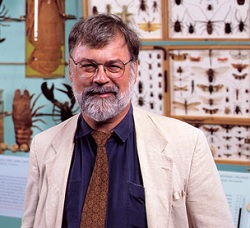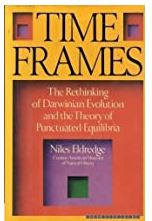|
TRANSLATE THIS ARTICLE
Integral World: Exploring Theories of Everything
An independent forum for a critical discussion of the integral philosophy of Ken Wilber
 David Christopher Lane, Ph.D.
Professor of Philosophy, Mt. San Antonio College Lecturer in Religious Studies, California State University, Long Beach Author of Exposing Cults: When the Skeptical Mind Confronts the Mystical (New York and London: Garland Publishers, 1994) and The Radhasoami Tradition: A Critical History of Guru Succession (New York and London: Garland Publishers, 1992). David Christopher Lane, Ph.D.
Professor of Philosophy, Mt. San Antonio College Lecturer in Religious Studies, California State University, Long Beach Author of Exposing Cults: When the Skeptical Mind Confronts the Mystical (New York and London: Garland Publishers, 1994) and The Radhasoami Tradition: A Critical History of Guru Succession (New York and London: Garland Publishers, 1992).If there's a singular topic Integral students need to be educated on it is evolutionary theory, given their frequent but uninformed use of the term "evolution". These short biographical chapters about evolutionary theorists have been written by different philosophy students of professor David Christopher Lane. (FV)
THE EVOLUTIONARY SCIENTISTS
Glimpses into the Life and Work of Great Thinkers in Evolutionary Biology
Coyne|
Crick|
Darwin|
Dawkins|
Diamond|
Dobzhansky|
Eldridge|
Gould|
Haldane|
Hamilton |
Lamarck|
Lovelock|
Mayr|
Mendel|
Monod|
Spencer|
Trivers |
Wallace |
Weismann |
Williams |
E.O. Wilson
Niles EldredgeUna ShingBorn on August 25, 1943, Niles Eldredge is a well-known biologist and paleontologist. As a scholar who claims he is not a science person, he has made great contributions to our understanding of human evolution and anthropology. He is also a successful writer, contributing his time to educate the general public and students on biodiversity and its many tribulations through over 160 scientific articles, books, and reviews. Today, he is the father of four and a grandfather. He lives in Ridgewood, New Jersey with his wife. Beyond academic knowledge, Eldredge has a great interest in music. He tends to spend his leisure time playing the jazz trumpet. Combining work and hobbies, Eldredge compares the historical development timeline of cornets and the development of trilobites to highlight the failures of intelligent design.  Niles Eldredge Eldredge was raised in a humble family. He is the only son of Robert and Eleanor Eldredge. His father was an accountant and his mother was a homemaker. In high school, he did exceptionally well in subjects related to language and humanities. To fully utilize his strengths, Eldredge started his undergraduate study in Columbia College at Columbia University, majoring in Latin. Originally, he planned to go to graduate school with an emphasis in law, and eventually become a lawyer. As he continued his study at Columbia, he soon discovered that he had a keen interest in academic research. As a result, Eldredge began his first job at the American Museum of Natural History in hopes to gain a deeper understanding of the relationship between science and human culture. This museum is one of his favorite places in Westchester County since he was a child. While working, Eldredge got a chance to work on a project sponsored by the National Science Foundation. During his college years, he met Stephen Jay Gould. They were both interested in studying fossil records and human biology. Gould later established a famous evolutionary theory with Eldredge—punctuated equilibrium. Before completing his undergraduate degree, he decided to switch his major to Geology under Norman D. Newell. Graduating summa com laude, Eldredge continued his research at the museum while entering thedoctoral program in Philosophy at the same university. In 1969, Eldredge became an adjunct assistant Professor at Columbia College. He also held the position as Curator in the Department of Invertebrates at the American Museum of Natural History. At the same time, he began to collect invertebrate fossils from the Brazilian fishing village reef. While collecting invertebrates, Eldredge gained a better understanding of evolution through the physical pattern of fossils. He found that only minor changes occur in fossil records for the same species over a long period of time. However, a dramatic difference in fossil records for the same species is seen at another epoch. Instead of gradual changes, there isn't any fossil to support the transitional period that occurred. He started questioning the existing belief of evolutionary process and began to investigate the hierarchy relationships of animals as well as the patterns of descent over time. In 1972, Eldredge and Stephen Jay Gould developed the evolutionary theory of punctuated equilibrium, the most famous and debatable research he has ever proposed. Punctuated equilibrium refers to the evolutionary changes of plants and animals in a relatively faster way. It proposes that once a species appears in the fossil record, the population of it will become stable, showing little evolutionary change for most of its geological history. This state of little or no morphological change is called stasis. However, the steady pace is “punctuated” by a rapid burst of change that results in a new species and that leaves few fossils behind. For example, a species of sea animals has existed for thousands of years. It remains in stasis status from the very beginning, showing little evolutionary change over this time period. Suddenly, the water temperature rises (this is the rapid burst of change) and prompts the sea animals to find a new way to survive. In order to do so, the sea animals must adapt to the new temperature. Through adaptations, their physical characteristics have evolved and became different from their original traits. The sea animals that failed to adapt to the new environment eventually died, leaving the survivors inherited with their newly developed traits. It sparks a change in the evolution of sea animals for the first time in thousands of years. Through the reproduction of the survivors, new traits get passed down, leaving some of their ancestors' old traits behind. It therefore marks a new static period of evolution until the next burst of change arrives. Punctuated equilibrium perfectly explains why there aren't any transitional fossil records found. Instead of having a gradual transition, species evolve in a jumping pace. Eldredge has published various works to help the general public gain a deeper understanding of evolution. The book Life Pulse: Episodes from the Story of the Fossil Record provides a more comprehensive explanatory on punctuated equilibrium. The Pattern of Evolution provides the reader a fuller picture of reproduction. He argues that simple reliance on the competition to reproduce fails to explain cross genealogical patterns in the history of life. Eldredge further explains the driving force behind the biological evolution. He proposes that “geological and other events are intricately linked to how species developed over time.” Apart from biology, Eldredge is also an expert in Paleontology. Published in 1980, Phylogenetic Patterns and the Evolutionary Process investigated the relationship between a group of species or certain tribes' heritable traits and evolutionary history. His contribution to the world of science has been substantial. Further Reading1. Time Frames: The Rethinking of Darwinian Evolution and the Theory of Punctuated Equilibria, Heinemann; 1st edition (1986) 2. The Triumph of Evolution: ...And the Failure of Creationism, Times Books (June 11, 2001)   MSAC Philosophy Group
The theory of evolution has a long history. However, it was not until Charles Darwin and Alfred Russel Wallace discovered that the wide variety of species we presently see were largely the result of natural selection did evolutionary studies have a solid, scientific basis. In the past one hundred and sixty years, a number of eminent biologists have contributed to our understanding of how complex life forms emerged from simpler, more rudimentary ones.
Comment Form is loading comments...
|